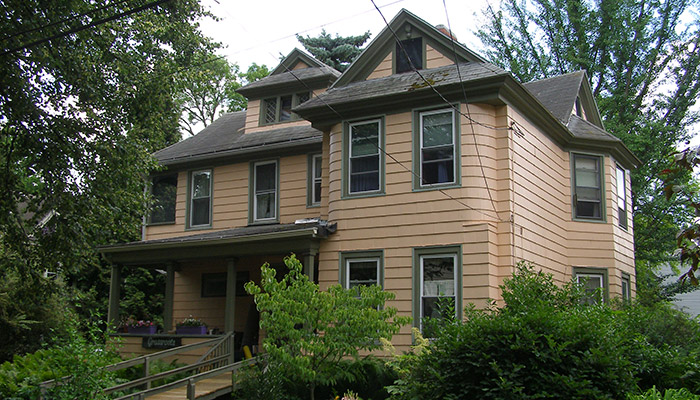The Old Neighborhood Part II
Stop #07
102/104 Avondale Place
- Built:
- Architect: Unknown
This was the first home on the street of Bernard Bannon, but was apparently partially destroyed in a fire. Today it is an unusual house which may be the result of incorporating older and newer elements in a rebuilding. In particular, the protruding semi-circular bay on the east end of the house is almost like a tower base, but it is surmounted by a protruding rectangular sleeping porch – an unusual arrangement. After Bannon, the house was occupied for decades by the Latham family. Before 1913, Latham was a progressive and joined Theodore Roosevelt’s Bull Moose Party.
Latham’s daughter Catarena Latham Humphrey lived in the house until her death in 1965. She had been a school teacher at Nottingham High School and at the Blodgett Vocational High School.
102 and 104 Avondale has a special place in the social, cultural and political history of the Westcott neighborhood. These buildings have housed The Grassroots/Dandelion Collective which has served as an incubator for many spin-off cultural organizations including the Syracuse Community Choir, Open Hand Theater and others. In 1972 Dandelion gave birth to the Women’s Information Center (now located at 601 Allen Street) one of the oldest, locally-based women’s centers in the country. The Collective’s houses provided the first offices for Syracuse Cultural Workers, which started in order to continue publishing the Peace Calendar, founded and coordinated by Dik Cool while on staff at the Syracuse Peace Council (SPC). Dik began the Peace Calendar with the 1972 edition and the first 11 editions (through the 1982 American Myths) were published by SPC. In 1982 the SPC Steering Committee decided not to do another edition, but Dik and four others (Karen Kerney, Linda Perla, Jack Manno and Jan Phillips) decided they wanted to continue the tradition and Syracuse Cultural Workers was born.
Sources:
“History of SCW,” Syracuse Cultural Workers website
